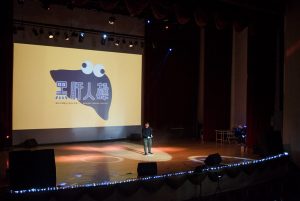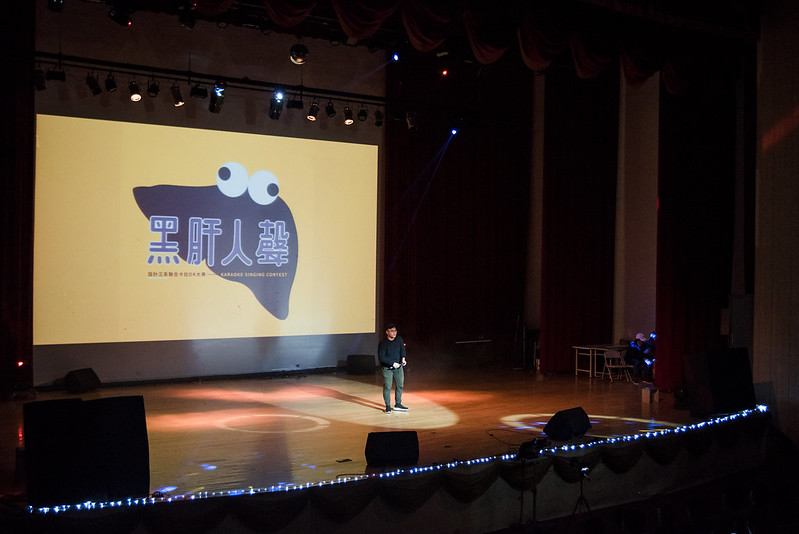
Image Credit: liver photo
As speakers, when we are standing in front of an audience, we are actually pretty naked. All that we have to work with when we are giving our speech are the words that are tumbling out of our mouths, some hand gestures, and perhaps some props that we’ve brought along. That’s pretty much it as we try to show the importance of public speaking. Unless you realize that you actually have a very large visual aid that is just sitting there waiting for you to use it. What am I talking about? Why the stage that you are standing on, of course.
The Power Of The Stage
All too often speakers don’t realize that they can use the stage as a part of their speech. I mean, it’s really just the thing that we stand on, right? First off, there may be times that you really can’t use the stage as a part of your speech. These times would be when you are required to stand behind a podium or a lectern during your speech. If this is not the case, then you need to realize that your stage provides you with an opportunity to involve your audience in your next speech.
How do you go about using a stage during your speech is almost a loaded question to ask. Many speakers today do use their stage as they are giving a speech. The problem is that they use it all wrong. We’ve seen them all. Some speakers just stand there, not moving at all. Other speakers work off the nervousness that they are feeling about speaking by wandering around with no purpose. Other speakers move from one side of the stage to the other as they desperately try to work their audience.
As speakers we need to understand that what these speakers are doing is not working. They are not creating energy with their audience. Instead, what they are doing is allowing tension to seep into the room during their speech. The end result of all of their movement is that it is going to end up distracting the audience and they won’t end up paying attention to the speaker’s real message. Instead, what we want to do as speakers is to find ways that we can use the stage to enhance what we are trying to share with our audience.
Three Ways To Use The Stage In Your Next Speech
When you have a stage that you can use as a part of your speech, this provides you with a fantastic opportunity to reenact a story or to make an illustration. When you do this, your stage can melt away. It will become a boat, an office, a backyard, wherever your story takes place. You can’t stand still. You’ll need to move around in the environment that you’ve created to show your audience where things are and how you interact with them.
A stage is a great way for a speaker to incorporate the stage as they communicate a continuum or to show scale to their audience. When you do something like this, you’ll have to go to one side of the stage (traditionally the audience’s left side) and state that this is the start of something. You then go to the other side of the stage (the audience’s right side) and state that this is the end of something. You can then travel between these two points sharing with your audience how something can start on the left side and travel through stages until it finally makes it to the right hand side.
Another way that you can make use of your stage during your speech is to assign different locations different values. What this means is that you move to a spot, tell part of your speech, and then when there is a change in your speech you then move to a new spot. I’ve done this when I’ve been telling my audience about all of the different companies that I’ve worked for. Each time I change a job, I move to a different part of the stage. This way the audience knows that there has been a change in my story and they are able to keep up with me.
What All Of This Means For You
As speakers, we need all of the help that we can get as we try to show the benefits of public speaking. When we are on stage it is really just us trying to find ways to connect with our audience. It turns out that we actually have a major tool that all too often we over look: the stage. If we can find out how to incorporate the stage into our next speech, then we’ll be that much more effective.
There may be speeches where you can’t walk around and use the stage. However, if you can, then the stage can be a great tool to use. We have all seen many different speakers try to use the stage who just end up failing. Their movement just ends up distracting the audience and allows tension to enter the room. A much better approach is to use the stage as a part of telling a story. Speakers can also use their stage to communicate a continuum or to show scale to their audience. Speakers can also assign different values to different parts of the stage and travel between those spots as they move through their speech.
Anything that can help us to make our next speech that much more compelling for our audience has got to be a good thing. Understanding that the stage that we are standing on can be used as a part of our speech is a powerful understanding. Once we realize this, we can start to find ways to incorporate it into our next speech. Using the power of the stage we can deliver speeches that will both hold on to our audience’s attention and allow us to make them want to hear what we are going to be saying next.
– Dr. Jim Anderson
Blue Elephant Consulting –
Your Source For Real World Public Speaking Skills™
Question For You: Do you think that there are any parts of a stage that we should not use during a speech?
P.S.: Free subscriptions to The Accidental Communicator Newsletter are now available. Subscribe now: Click Here!
Note: What we talked about are advanced speaking skills. If you are just starting out I highly recommend joining Toastmasters in order to get the benefits of public speaking. Look for a Toastmasters club to join in your home town by visiting the web site www.Toastmasters.org. Toastmasters is dedicated to helping their members to understand the importance of public speaking by developing listening skills and getting presentation tips. Toastmasters is how I got started speaking and it can help you also!
What We’ll Be Talking About Next Time
All to often when we are giving a speech, we do it in what is called the “classic style”. This means that we stand on a stage and we speak to our audience and they listen to us because of the importance of public speaking. This is a one-directional monologue. However, times are changing. We are no longer limited to having to give our speeches in this way. Our audiences want more interaction with us during our speech. As speakers we need to understand what new tools are available so that we can start to work them into our next speech.

